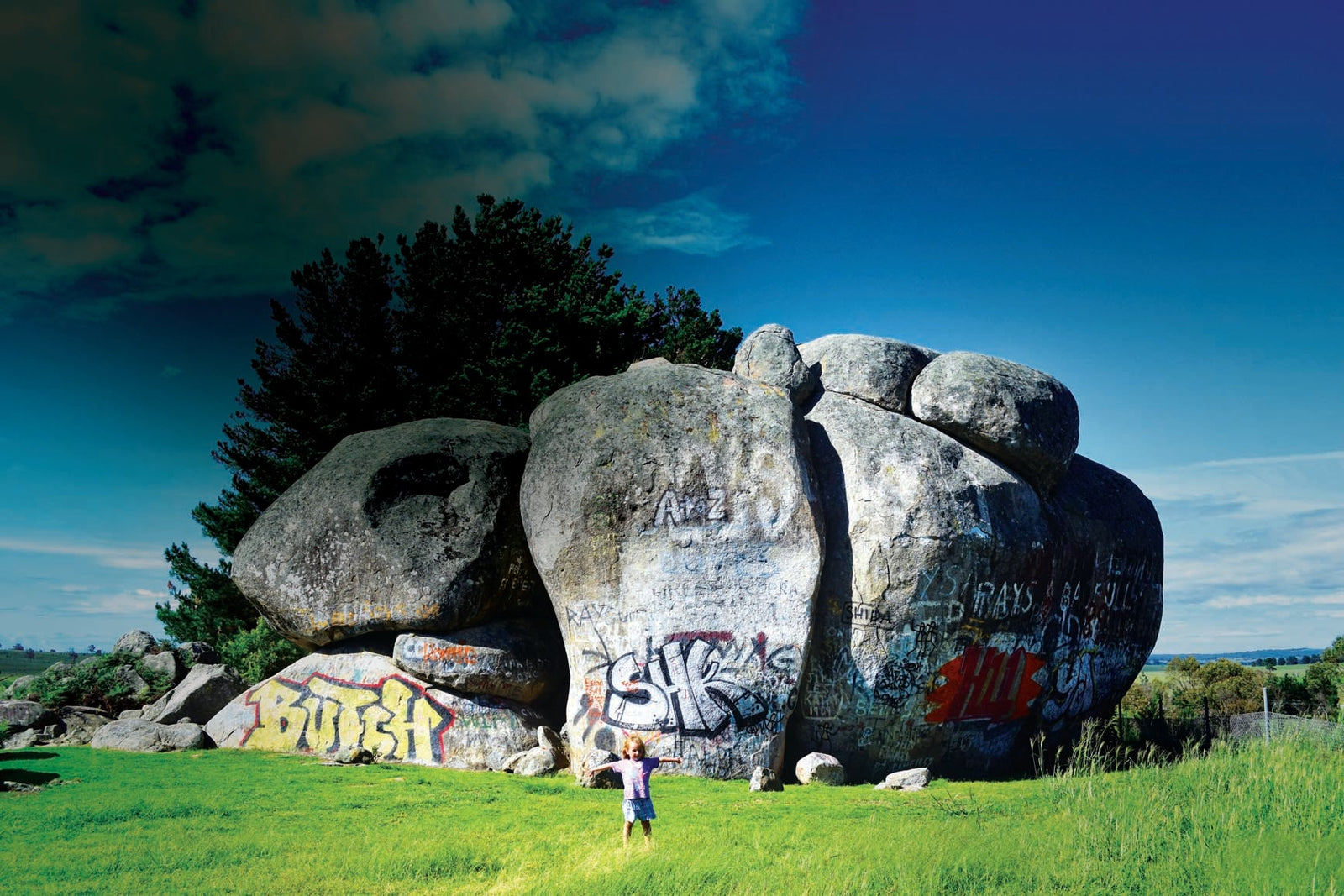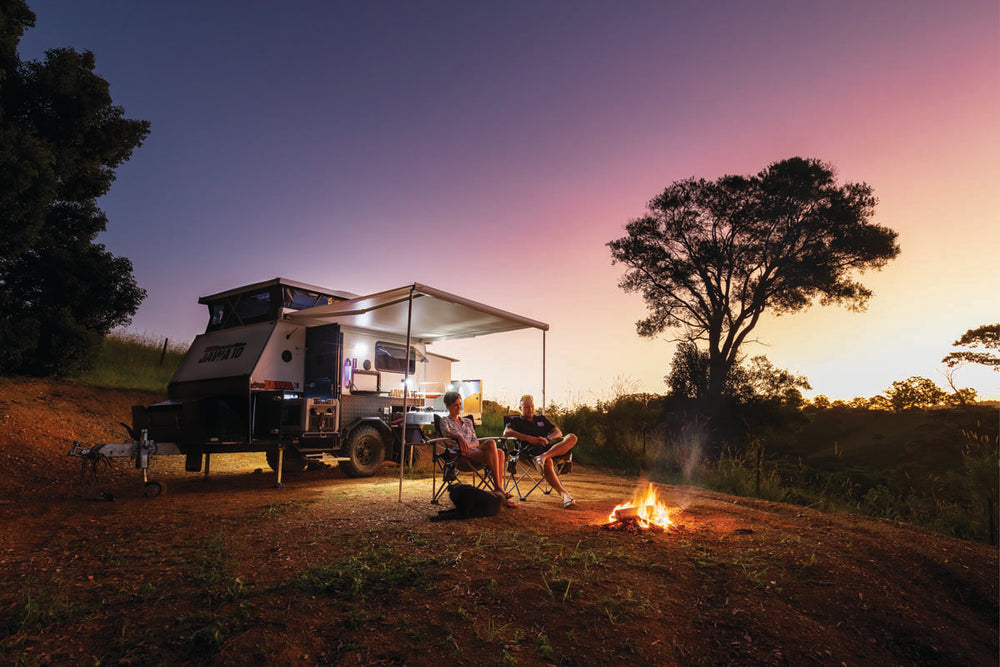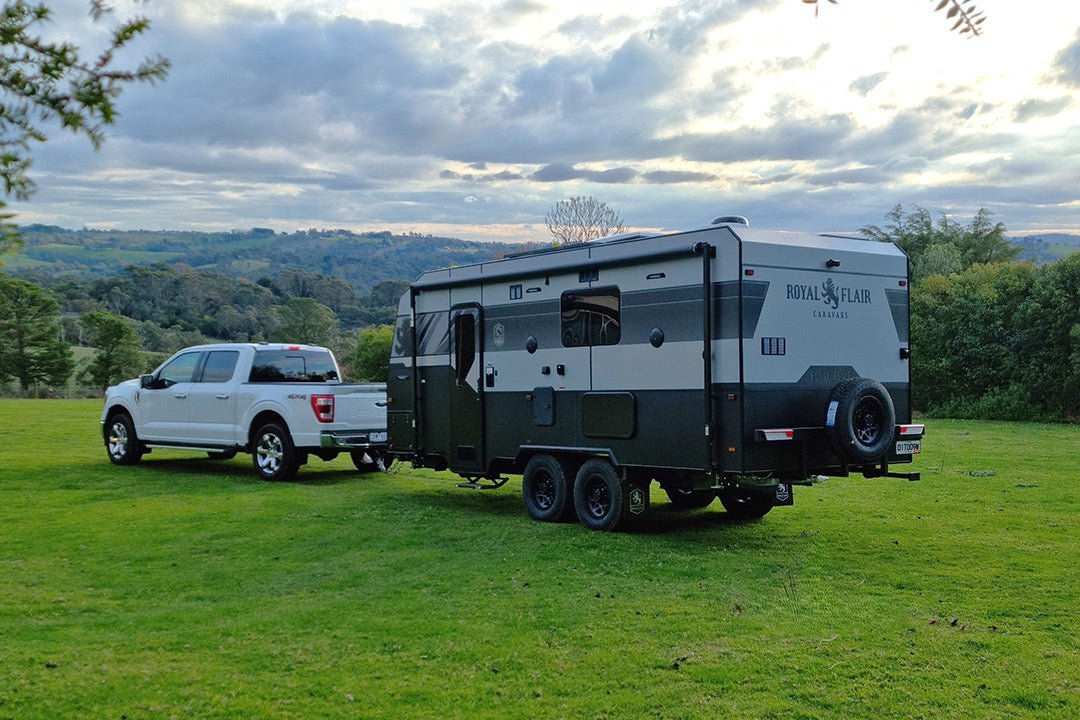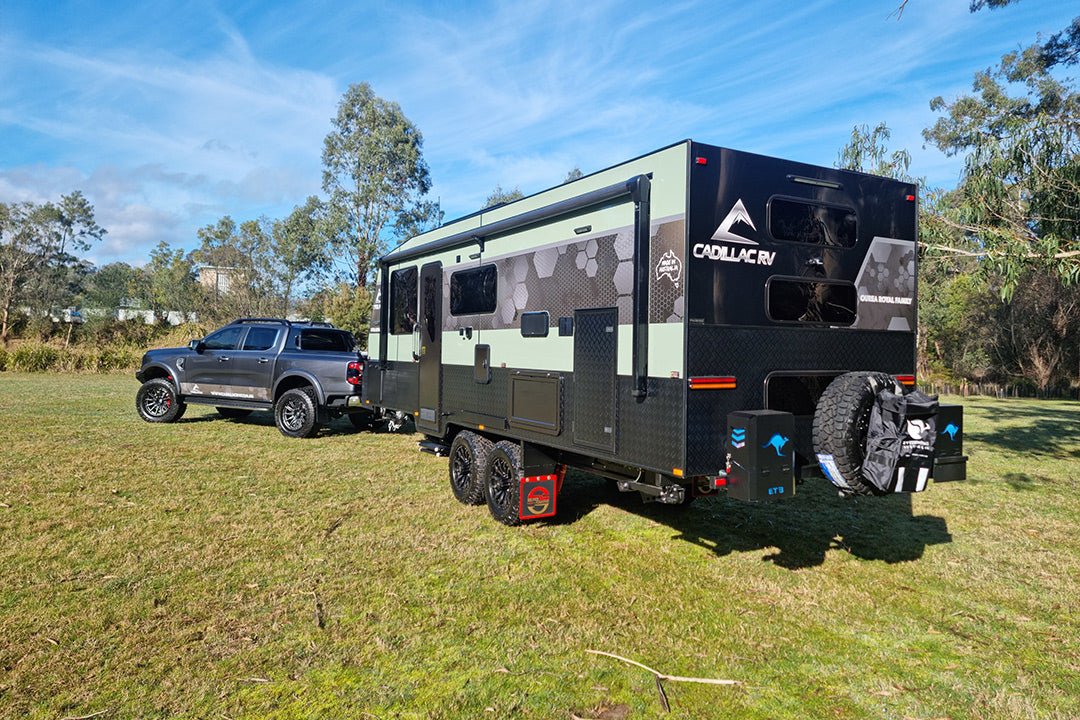Thunderbolt's Way, New South Wales

Here’s a Pub Test: Name five bushrangers in five seconds. Go! Maybe you’ll say the Kelly Gang and then laugh, pointing out that there are five right there. But, actually, there were just four in the Kelly Gang. And, while you’d have no difficulty identifying Ned, who can name the other three?
Whoever ends up on your list, early bushrangers are likely to have been escaped convicts (or their sons) who had developed the survival skills necessary to use the Australian bush as their refuge from authorities. By the 1820s, the term ‘bushranger’ had evolved to refer to those who had abandoned the social order to take up 'robbery under arms' as a way of life.
A Bolt from the Past
It's estimated that more than 2,000 bushrangers roamed the Australian countryside — starting with the convict escapees of the late 1700s and stretching through until Federation in 1901. So, when we applied our pub test to a few mates recently, maybe we shouldn’t have been too surprised that no one nominated Fred Ward. But, Fred had been part of my own personal folklore for aeons, having spent time around his home turf throughout my early years.
You may know Fred Ward as Captain Thunderbolt — a nickname he gave himself. His real claim to fame was that, by his death in 1870, he had plied his outlaw trade longer than any other bushranger in New South Wales. He was the last bushranger who supported himself solely from crime.
In 1856, at age 21, Fred was sentenced to 10 years hard labour on Cockatoo Island for stealing and receiving 75 horses. While he was released early, he was soon at odds again with the law. In 1863, he escaped his second incarceration on Cockatoo Island and then spent the next seven years robbing mail coaches and inns before the law finally caught up with him in a shoot-out.
So he’s definitely worth a place on the Bushranger ‘Top Three’. After all, Ned Kelly really only knocked around the bushranger circuit for three years. Maybe Ned’s enduring place in history really boils down to his choice of fashion…
A Bushranger’s Range
Connecting Gloucester to Inverell in the northern tablelands of NSW, you’ll travel the A15 highway which, as well as traversing high quality agricultural land, passes through scenic and thickly forested mountain areas with several national parks and nature reserves.
Around these parts, it’s clear that Frank Ward made a lasting impression. This route, known as the New England Highway, is often referred to as Thunderbolt’s Way. There’s a handy Cartoscope map that focusses solely on this area and its association with this horse stealer and bank robber.
This area was Fred Ward’s backyard. Born Frederick Wordsworth Ward in 1835 near Windsor on the Hawkesbury, he was the son of a convict. By the age of 11, he was working at the aptly named Aberbaldie Station near Walcha in this New England region.
Boy meets Girl
Fred showed some potential as a bushman from an early age, reportedly leading his new employers from Maitland near Newcastle all the way to the Station, 350 kilometres away. But, whatever potential he may have had as a station hand, his family’s criminal roots were destined to take hold.
Ten years later, he spent his jail sentence on Cockatoo Island with his nephew who he had helped steal the 75 horses. Although he had the opportunity to redefine his life course after being granted a ticket of leave and moving to Mudgee, his story took a different turn when he met Mary Ann Bugg.
Their story started in the usual way: boy meets girl, girl falls pregnant, boy takes girl back to her family for the birth. The trouble was Fred was away too long and breached his ticket of leave. He didn’t help himself by arriving back in the Mudgee region on a stolen horse.
Fred was a criminal again, and this time he wasn’t prepared to hang around on Cockatoo Island at the authority’s pleasure. He had a family. So he escaped, re-joined his wife and began the final chapter in his short life. Both he and Mary Ann entered the annals of Australia’s 19th century bushrangers committing more than 200 crimes. Indeed, without Mary Ann, Captain Thunderbolt would never have lasted as a bushranger as long as he did.
The daughter of an English convict and an aboriginal mother from the Dungog region, she is rumoured to have taught Fred to read and write, and to have cultivated in him a knowledge of aboriginal lore and the skills that kept him alive for extended periods in the bush. She helped him hide and she kept him well fed. Such was her involvement with her husband's outlaw activities, she was apprehended herself by police on three occasions.
Captain Thunderbolt is said to have become accepted within the aboriginal community and as such was aided and protected in ways other white fellas were not. With this support network, he robbed mailmen, travellers, inns, stores and stations from Newcastle to Queensland, and nearly as far west as Bourke.
Travelling across his domain today, supported by 169 horsepower under the bonnet of our Toyota Hilux, it’s truly impressive to consider the distances he covered and the conditions under which he must have lived, secluded in a series of caves and hideouts. So we thought we’d spend some quality time in Thunderbolt country to see what remains of his legacy, 150 years later.
Thunderbolt’s Cave - Rylstone
Starting just south of Thunderbolt’s Way, our first step in Fred Ward’s footsteps begins near Rylstone. Locally, this place is called Baby Feet Cave, due to the aboriginal artwork stencils of babies’ feet high up on the cave wall. Access is via the Bylong Valley Way at the northern end of Ferntree Gully Environmental Reserve, approximately 17km north of Rylstone. Look for the large blue sign saying "Fireplace" and follow the track.
Go left at the fork and you’ll reach the Caves. Local history and aboriginal lore say that Fred Ward and Mary Ann stayed here, which is likely true as the couple met nearby. In any event, this area marks a great start to a Thunderbolt-themed road trip, located as it is, in a beautiful part of the country and within a stone’s throw of Mudgee's wineries.
Thunderbolt’s Rock – Uralla
Bald Rock, Split Rock or even Big Rock — this place is known by many names, but the most common moniker is Thunderbolt’s Rock — and it’s only 5km south of the township of Uralla.
There are reports that just three days after escaping Cockatoo Island, Fred was spotted here by troopers as he waited to ambush the mail coach. In the ensuing gunfight, he was reportedly shot in the back of his left knee, an injury that would prove critical in this bushranger’s unfolding story.
It seems unlikely that Fred could have managed to get to Uralla, 450km from Cockatoo Island, in just three days — even today, the trip takes around five and a half hours by car. But, never mind, when you climb the rock, you’ll see a line of trees to the west marking the Kentucky Creek, which is where Captain Thunderbolt was reportedly shot and killed by Constable Alexander Walker on May 25, 1870.
The name ‘Uralla’ was taken by European settlers from the local Anaiwan people, and it means “meeting place”. Today, the town supports modern-day get-togethers with a 21st century foodie slant. It’s clear the town has had a bit of a coffee shop revival recently and there’s also a small brewery, the New England Brewing Company.
There are two caravan parks in town and a 24 hour stop-over option at the Rotary Park, with toilets and picnic tables. While you’re in town, check out the three-storey McCrossin’s Mill built in 1870. It’s now an award-winning museum with a diverse and unique collection of exhibits, including a fascinating display of Captain Thunderbolt artefacts.
Thunderbolt’s Grave – Uralla
The story of Thunderbolt’s death was reported in the Sydney Morning Herald of June 1, 1870. The report is of a man, with a gunshot wound on the back of his left knee, the same injury Fred Ward suffered in his early period as an outlaw. Other features used by the magistrate to identify the body as Captain Thunderbolt’s included his height, hair and eye colouring as well as the moles and warts that had originally been described in the Police Gazette Reward Notice when Fred escaped from Cockatoo Island. The identification was supported by three witnesses who testified under oath that the body was Fred Ward’s. And they had reason to know him: one was his former accomplice, one was a fellow employee from Mudgee and the other was a Senior Sergeant during Ward’s incarceration.
Still, there are plenty who say that the person killed by Constable Walker at Kentucky Creek wasn’t Fred Ward at all. Either way, you’ll find Fred Ward’s grave in the Uralla Cemetery. Unexpectedly, you’ll also find a dump point at the cemetery for your convenience.
Thunderbolt’s Cave – Armidale
Not far from the village of Black Mountain near Armidale is a right hand turn off the New England Highway that leads to Thunderbolt’s Cave — identified by an old road sign. Easily reached by a 100 metre walk downhill from the carpark, the cave was used by Thunderbolt in 1867 and 1868, the years when he conducted robberies in the Tamworth and New England districts.
It’s here that you can start to imagine the isolation of the bushranger’s life, hiding out in the hills.
Thunderbolt’s Hideout – Tenterfield
One kilometre north of the Tenterfield Visitor Information Centre along Thunderbolt’s Way, there’s a right turn onto the Mt Lindsay Road. Twelve kilometres along the road, you’ll see the sign for ‘Thunderbolt's Hideout’. It's a 300 metre walk to the rocky outcrop used by Captain Thunderbolt as both a hideout and lookout.
Legend has it he used the large area between the rocks to stable his horses, and the small overhang shelter of the large rock as a place to camp. Even on a hot day, this is a cool place to rest on the granite and there’s a running creek nearby for water.
In the days of the gold rush, Mt Lindsay Road was the main route north to the more populated centres of Warwick. So a hideout here made a good lookout for the mail coach and any other unlucky passers-by.
Today, you’ll find it's also smack-bang between two magnificent National Parks: Boonoo Boonoo and Bald Rock. So, beyond channelling your inner outlaw, this is a great place to rest a while and enjoy all that nature has to offer. You’ll also find yourself in the midst of some fascinating World War Two history.
Trapped in Time
Most Australians have heard of the Brisbane Line, which was part of a defensive strategy to deal with the threat of a Japanese invasion. The plan was that our troops would withdraw south to this Line in order to stretch out the enemy's logistics chain, making them easier to defeat. In reality, the Line is not just one frontier, but was spread out, and part of it is here at Thunderbolt’s Hideout.
Fifty metres north of the carpark for Thunderbolt’s Hideout, you’ll find the site where the Australian Army buried a mass of explosives. The intent was that, if the Japanese got through to here, our diggers would blow up the road creating a giant crater. There’s a sign at the site commemorating this fact.
On either side of the road, you’ll find further artefacts from the World War Two era: Tank Traps. These are trees, cut down to knee height, with poles made from their trunks, and these too buried to the same height. The intent was that, once the road had been blown up, the enemy’s tanks would have to drive around the crater, and would then get snagged on one of the poles as they left the road. Our diggers would then shoot the soft underbelly of the tank with a rocket, which would, in turn, create a road block for other tanks. Thankfully none of this ingenuity needed to be put to the test in battle.
Fast Facts:
Thunderbolt’s Way is a 290km country road traversing the Northern Tablelands region of New South Wales:
It is named after local bushranger Frederick Ward, alias Captain Thunderbolt, who roamed there in the 19th century.
POINTS OF INTEREST
Thunderbolts Cave Rylstone: Also known as Baby Feet Cave due to the aboriginal artwork stencils on the wall
Thunderbolt's Rock Uralla: 6km south of Uralla, Thunderbolt used these granite boulders as a vantage point
Thunderbolt's Cave Armidale: Near the village of Black Mountain, these caves were used by Thunderbolt in 1867 and 1868
Thunderbolt's Hideout Tenterfield: 12km from Tenterfield, Thunderbolt stabled his stolen horses here
Thunderbolt's Statue: Found in Uralla’s main street, the statue was unvieled in 1988
Thunderbolt's Grave Uralla: Located in Uralla’s Pioneer Cemetery, the grave is a memorial to Thunderbolt.







